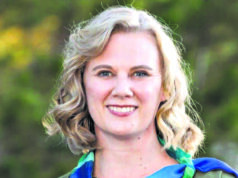
A husband-and-wife team have beaten out the competition, leading the way in medical research.
Dr Intan Oldakowska and Dr Matthew Oldakowski have developed a new surgical screw to be used when repairing bone fractures.
The National Health and Medical Research Council named Curtin University duo in its annual list of the country’s leading researchers, for developing new surgical hardware which could dramatically improve results for patients.
In collaboration with surgeons and bioengineers from Royal Perth and St John of God Hospitals, Dr Oldakowska and Dr Oldakowski created the REX Screw which is strong and expandable, yet also easy to remove if required.
The titanium screw has a retractable spreading-arm mechanism which increases strength of the connection between the screw and bone.
This in turn reduces the possibility of the screw loosening and requiring a second surgery to fix. This leads to a better outcome for the patient, reducing the likelihood of them losing independence.
Dr Oldakowski said they created the REX Screw to address key issues surgeons and patients faced with the existing screws commonly used in fracture surgery.
“Currently, surgeons have the option of traditional surgical screws which can become loose over time leading to repeat surgery, or expandable screws which stay fixed but can be difficult or impossible to remove when required,” Dr Oldakowski said.
The REX Screw provides a solution to these challenges and could have a particularly significant impact for patients who experience hip fractures – the most common fracture requiring surgery.
Dr Oldakowska said screw failures can lead to a loss of independence, disability and even death in hip fracture patients.
“About one in three adults aged over 50 die within 12 months of suffering a hip fracture and 40 per cent never return to pre-fracture mobility,” Dr Oldakowska said.
“Improving surgery results and reducing complications will have significant benefits for patients and for the hospital system by reducing unnecessary surgeries and making better use of resources.”













